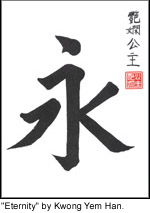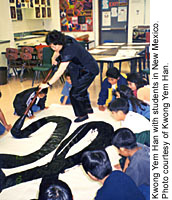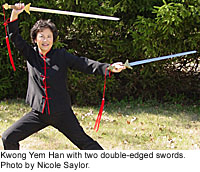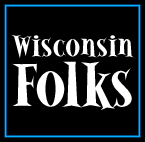Home | Search | The Artists | Teaching | Hiring | About This Site | Contact Us

Yem Han’s
Art Form

Chinese painting and calligraphy
Pepin, WI
Four Treasures
Yem Han’s art studio
is a small room off her bedroom. It is crammed full of paper, brushes, and all the things she needs to paint or do calligraphy.
Before she can put her brushes to paper, she first gathers on her desk the supplies needed to get started. The “Four Treasures of the Studio” are required tools for any good Chinese painting.
|
The Four Treasures ink stick | ink stone
|
The treasures are:
1) An ink stick made out of pine soot
or lamp
black, mixed with glue. “The ink is permanent. It doesn’t fade,” Yem Han explained. 2) An ink stone to grind the ink. 3) Brushes. 4)
Oriental
paper often called “rice paper.”
This is a thin paper usually made from wood pulp and fibrous
parts of plants such as
![]() mulberry, bamboo, hemp, and sandalwood. Yem Han uses other tools too: a felt pad to absorb the excess
ink, a weight to hold down the paper, and water and brush holders.
mulberry, bamboo, hemp, and sandalwood. Yem Han uses other tools too: a felt pad to absorb the excess
ink, a weight to hold down the paper, and water and brush holders.
 Once things are in place
the first task is to grind the ink. You had better not be in a hurry. Grinding takes
twenty minutes! For Yem Han, it’s a time to relax and meditate.
Once things are in place
the first task is to grind the ink. You had better not be in a hurry. Grinding takes
twenty minutes! For Yem Han, it’s a time to relax and meditate.
Once the ink is creamy and ready to use, Yem Han always begins by painting the Chinese character, ‘eternity’ or yung in Chinese. Why? The symbol contains the eight basic strokes used in Chinese painting. “And that’s what you need. The strokes are one on the top, two on the side, down, angle, down, up, from top to bottom, and then going down. I would practice over and over again the Chinese character yung before I do any drawings or painting.”
 No painting is complete without an artist’s unique signature on it. Yem Han writes her name using Chinese characters and then adds a red “chop,” which is her distinctive seal.
Plus, ever since she found out that she descends from Chinese royalty, she adds to her signature the Chinese character for princess immediately after her name.
Click on Yem Han’s signature to read about her royal ancestry.
No painting is complete without an artist’s unique signature on it. Yem Han writes her name using Chinese characters and then adds a red “chop,” which is her distinctive seal.
Plus, ever since she found out that she descends from Chinese royalty, she adds to her signature the Chinese character for princess immediately after her name.
Click on Yem Han’s signature to read about her royal ancestry.
The Big Brush
 Kwong Yem Han
has a special goat’s hair “big brush.” It’s all hand-plucked from the hair just below a goat’s chin — you know, the goatee!
Kwong Yem Han
has a special goat’s hair “big brush.” It’s all hand-plucked from the hair just below a goat’s chin — you know, the goatee!
This jumbo-size brush is as tall as she is! It is so big that Yem Han has to train to paint with it.
She stays fit by practicing the ancient art of sword dancing. “The big brush weighs about
 fifteen pounds and you need to strengthen your muscles by
using the sword,” she explained. “It’s a double-edged sword but it’s dull. It’s
used for exercising, not fighting.”
fifteen pounds and you need to strengthen your muscles by
using the sword,” she explained. “It’s a double-edged sword but it’s dull. It’s
used for exercising, not fighting.”
Hundreds of Brushes
Yem Han spends most of her time painting with much smaller brushes. Each regular-sized brush is made from the hairs of different animals—weasels, rabbits, goats, deer, sable, foxes, wolves, sheep, horses, and even mice whiskers. She has over 300 different types of brushes!
Why so many brushes? Yem Han explains, “There are so many brushes that I use for different techniques, for what I want in a painting, whether I want fine lines or just solid lines or easy flowing lines. Details like birds, flowers—there are different brushes for all of them.”
Now that we know about the tools that Yem Han uses, let’s find out about what she paints with them!

For Educators:
“You must learn how to write before you paint.”
– Kwong Yem Han
Home | Search | The Artists | Teaching | Hiring | About This Site | Contact Us
